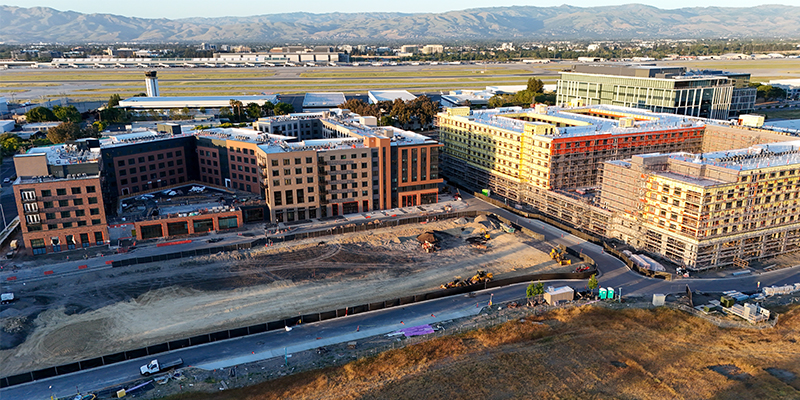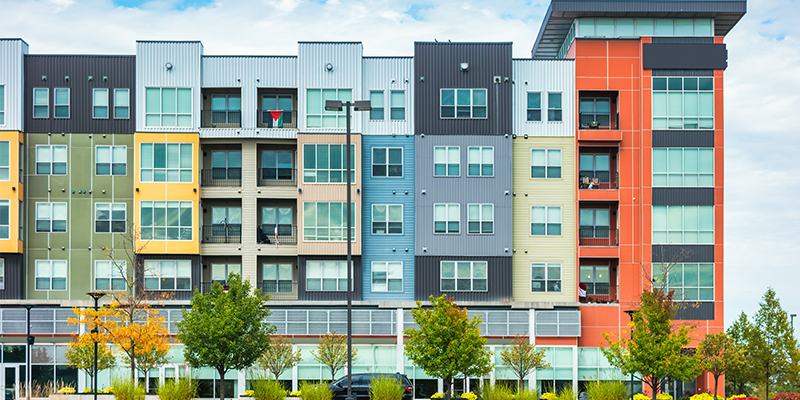By Aquiles Suarez
Recent legislation in California expands design and siting requirements for logistics facilities and restricts truck routes to and from such facilities. A session at I.CON West this week in Los Angeles addressed the impact of this anti-warehouse legislation on industrial infill development in California. Audience members heard from several panelists about the requirements of the law and its effects on a number of areas ranging from design changes required in projects, impact on land values, implications for the entitlement and permit process, and the road ahead for advocacy efforts to make needed changes in the law.
The panel was moderated by Tim Jemal, CEO of NAIOP’s SoCal chapter. On the panel were John Condas, a partner at Allen Matkins who was heavily involved in the legal analysis of the legislation and with the commercial real estate industry’s advocacy efforts; Michael Longo, senior vice president of CBRE; Patrick Schlehuber, chief investment officer for Rexford Industrial Realty; and Sergio Valentini, Southern California regional president of Ware Malcomb.
California Assembly Bill 98 (AB 98) expanded design and siting requirements for logistics facilities, restricted truck routes to and from such facilities, and imposed additional requirements such as building two affordable housing units for each residential unit demolished. Key to the legislation was the requirement that industrial facilities be certain distances from so-called “sensitive receptors,” which were defined to include churches, schools, parks, residential areas and several additional structures. The practical effect is to severely limit the availability of development sites.
Jemal began the session with a brief history of the legislation, NAIOP’s success in defeating past versions of similar bills, and the California legislature’s last-minute action to pass this most recent version with little industry input. Party leaders in Sacramento “gutted and amended” the bill in the last five days of the legislative session, essentially replacing the original language with harsher, restrictive language that severely impacts the logistics industry.
Key points from the discussion:
- The legislative language of AB 98 is full of ambiguities that have left project developers uncertain as to what is needed to comply with the requirements of the legislation in many instances, according to Condas. In some cases, for example, it is not clear whether required distances for land buffers are to be measured from the loading dock of a facility or the property line. Valentini noted that city officials, who have not received guidance on how to enforce the law’s requirements, are often at a loss as to what guidance to give project developers.
- Local officials were opposed to the legislation because it takes away much of their authority over land-use matters in their jurisdictions. In many instances, cities want to place industrial facilities in certain locations but cannot because of AB 98’s impact. The legislation treats all sensitive receptors equally, so residences are treated the same as certain businesses. In one example, the only sensitive receptor was a skate park that had been built on empty land.
- The uncertainty in the market because of AB 98 has impacted the valuation of land and existing assets, according to Schleheber. Land that had once been valuable and had potential for future industrial development has been negatively affected because AB 98 would now impose increased costs. Alternatively, existing infill sites could become more valuable as development slows. In that scenario, it would be preferable to be a property owner rather than a developer.
- Long noted that it had not been a robust or kind environment for land values in California to begin with, and AB 98 has only made things more challenging. He emphasized that under AB 98, there is a premium on getting more of the analysis and upfront work done by developers to ensure a project is viable.
Jemal and the panelists ended the discussion with a call for those in commercial real estate to raise their voices and increase the level of their advocacy efforts at the state and local level.

This post is brought to you by JLL, the social media and conference blog sponsor of NAIOP’s I.CON West 2025. Learn more about JLL at www.us.jll.com or www.jll.ca.








